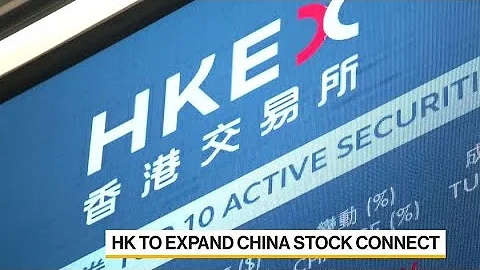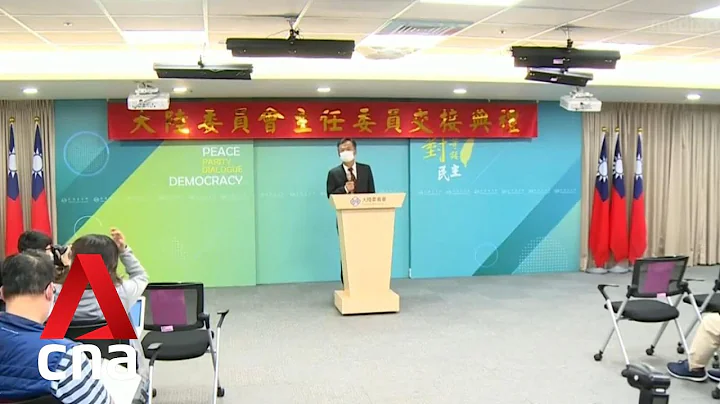
interconnection ushered in new developments. On the evening of June 28, the China Securities Regulatory Commission and the Hong Kong Securities Regulatory Commission issued a joint announcement, deciding to approve the two exchanges to formally include eligible exchange-traded open-end funds (hereinafter referred to as ETFs) into mainland and Hong Kong stocks. Market transaction interconnection mechanism, and it is clear that ETF trading under the interconnection will begin on July 4, 2022.
It is understood that since the joint announcement of the China Securities Regulatory Commission and the Hong Kong Securities Regulatory Commission in late May this year, the regulatory agencies of the two places have worked together on the preparations for the inclusion of ETF in the interconnection. At present, relevant business rules, operating plans and regulatory arrangements have been determined, and the technical system is ready.
The announcement pointed out that the exchanges, securities trading service companies and registration and clearing institutions of the two places should perform various interconnection responsibilities in accordance with the law and organize market parties to orderly carry out ETF inclusion business related to interconnection; securities companies should abide by relevant regulatory provisions and business rules , strengthen internal control , prevent and control risks, provide investor education and services, and effectively safeguard the legitimate rights and interests of investors; investors should fully understand the differences in laws, regulations, business rules and practical operations of the two markets, and prudently evaluate and control risks, and rationally carry out interconnection-related investments.
Why should ETF be included in the interconnection?
China’s ETF market is developing rapidly and has huge room for future development. As of May 2022, the scale of ETF products in mainland China is close to 1.4 trillion yuan. However, due to the early development of ETFs in overseas markets, compared with mature markets such as Europe and the United States, the shares of Mainland China and Hong Kong ETFs in global ETF assets are relatively low.
Morningstar data shows that as of March 2022, the U.S. ETF market accounts for 72% of the total global ETF size, while mainland China and Hong Kong account for only 2.2% and 0.4%.
So what is the charm of domestic ETFs? Zhang Yuxiang, fund manager of Penghua’s Quantitative and Derivatives Investment Department, pointed out that as a convenient investment tool, ETFs can play a role in a package of investments and allocations, especially through different styles, market values and sector products to achieve allocation and rotation needs; At the same time, ETFs have product features such as low transaction costs, high efficiency, high transparency, and convenient transactions. They can also effectively disperse the risks of individual stocks and are in line with foreign investment concepts and allocation needs.
He also said that with the vigorous development of ETFs in China, not only ETF products with strong market representation and covering core assets such as the Shanghai and Shenzhen 300 have been covered, but also many high-quality industry themed ETFs have been intensively listed, which are closely related to China's long-term It is consistent with the development theme and has certain scarcity on a global scale.
"Therefore, the inclusion of interconnection in industry ETFs will help overseas investors to more conveniently and refinedly lay out A-share subdivided industries and popular tracks." Zhang Yuxiang said.
Xu Meng, fund manager of China Asset Management, also pointed out that the number and scale of domestic ETFs are large, and there are many targets to choose from; at the same time, domestic ETFs have good liquidity, especially industry-themed ETFs. Among them, one of the reasons for the good liquidity of domestic ETFs is that there are many individual investors. After penetrating the ETF linkage fund , individual investors account for more than 50%. In addition, the arbitrage mechanism of the domestic ETF market is complete. Due to competition reasons, fund companies Market makers will be hired to increase liquidity.
He also emphasized that some domestic ETF varieties are scarce in Hong Kong and overseas markets, such as the food and beverage sector and the new energy vehicle sector.
Zhang Yuxiang also believes that the interconnection of ETFs has brought overseas investors the opportunity to conveniently invest in ETFs that are rarely available in China. What is the impact of
ETF being included in the interconnection?
Xu Meng believes that the inclusion of ETFs in interconnection will, on the one hand, promote the development of the domestic ETF market; on the other hand, it will further increase the concentration of the domestic ETF industry. At the same time, foreign investors will also pay more attention to the index management capabilities of fund managers and the competitive advantages of ETFs.
In his opinion, while participating in northbound stock trading, overseas asset management institutions may also use northbound ETF trading to do some liquidity management.The inclusion of ETFs in the stock exchange will bring long-term overseas funding sources to the domestic ETF market. Specifically, the trading volume of domestic ETFs and the proportion of overseas long-term allocation will gradually increase, and it is expected that 150 billion to 200 billion of northbound funds will be allocated to domestic ETFs.
Xu Meng also believes that the inclusion of ETFs in interconnection can enhance the influence of domestic ETFs in the international capital market. In addition, some domestic investors may follow northbound funds to allocate related ETFs.
Zhang Yuxiang said that the interconnection mechanism is an important reform of the follow-up system of Hong Kong Stock Connect . In the medium and long term, the impact will be far-reaching. The ETFs of the two places will also enter the "interconnection era" from the "interconnection era".
Zhang Yuxiang believes that this will not only help enrich the types of trading products and provide more convenience for foreign investment in China’s capital market, but it is also of great significance in promoting the mutual integration of the capital markets of the two places and the further opening of China’s capital market. In particular, it helps international long-term investors make allocation investments in A-shares, and its impact on A-shares may be greater than Hong Kong stocks .
Liu Gang, managing director and strategic analyst of the Research Department of CICC, pointed out that since the opening of Shanghai-Hong Kong Stock Connect and Shenzhen-Hong Kong Stock Connect at the end of 2014 and 2015, the cumulative northbound and southbound inflows have reached RMB 1.6 trillion and RMB 2. trillion yuan, and transaction activity is also increasing. Since its opening, the Shanghai-Shenzhen-Hong Kong Stock Connect mechanism has been continuously improved and optimized, and the scope of transactions has been continuously expanded.
The inclusion of ETF in the interconnection mechanism is another landmark expansion event. In the medium to long term, it will have far-reaching impacts. It will not only help enrich the types of trading products and provide more convenience for foreign investment in China's capital market, but it will also be of great significance in promoting the mutual integration of the capital markets of the two places and the further opening of China's capital market.
For investors, Liu Gang pointed out that the implementation of the Internet ETF will further introduce "living water" to the mainland capital market and help further improve the investor structure of the A-share market.
Which investors can participate?
There is a lot of speculation in the market about which ETFs can be included in the interconnection mechanism. According to the announcements issued by the Shanghai, Shenzhen and Hong Kong exchanges on June 28, Shell Finance reporters found that there are 87 ETF targets in the first batch of inclusions, including Mainland investors can buy 4 Hong Kong stock ETFs through the southbound Shanghai-Hong Kong Stock Connect and southbound Shenzhen-Hong Kong Stock Connect; Hong Kong investors can buy 83 A-share ETFs through the northbound Shanghai-Shenzhen Stock Connect.
Among them, there are 53 Shanghai Stock Connect ETFs, including Shanghai Stock Exchange 50 ETF, financial ETFs, dividend ETFs, etc.; there are 30 Shenzhen Stock Connect ETFs, covering core broad-based products such as GEM ETF, Shanghai and Shenzhen 300 ETF, as well as biotechnology ETFs. , chip ETF, carbon neutral ETF and other representative industry theme products, mainly concentrated in the fields of advanced manufacturing, digital economy and green and low carbon.
Which investors can participate? According to the current standards of Shanghai-Shenzhen-Hong Kong Stock Connect, eligible overseas investors can trade eligible ETFs listed on the Shanghai-Shenzhen Stock Exchange through Shanghai-Hong Kong Stock Connect; southbound individual investors must participate in Southbound Trading through Southbound Trading, and the total assets of their securities accounts and capital accounts must not be less than at RMB 500,000.
It is worth noting that the Interconnection ETF can only be traded in the secondary market, and subscription and redemption are not allowed. In terms of investment quota, the ETF investment quota is calculated and managed together with the stock investment quota, that is, the northbound daily quota is 52 billion yuan and the southbound daily quota is 42 billion yuan.
Liu Gang pointed out that based on a comprehensive comparison of the current average quota usage for north-south transactions and the scale of ETFs listed in the two places that meet the inclusion conditions, the current two-way quotas are sufficient to meet transaction needs.
Beijing News Shell Finance Reporter Hu Meng Editor Chen Li Proofreading Wang Xin





















